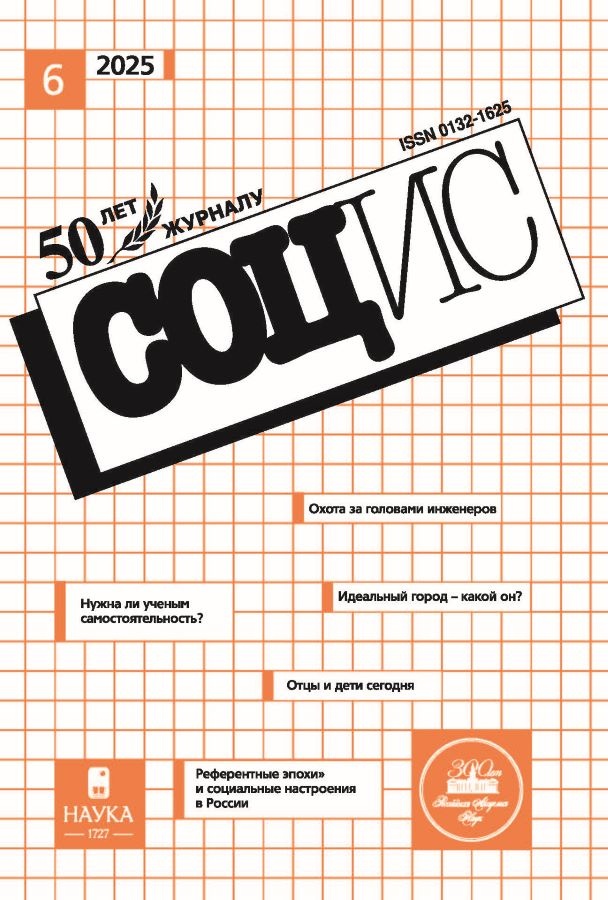Demographic situation in a depopulated region of the Russian federation (the Saratov region case)
- Authors: Loginova L.V.1
-
Affiliations:
- Saratov State Law Academy of Law
- Issue: No 6 (2025)
- Pages: 105-118
- Section: DEMOGRAPHY. MIGRATIONS
- URL: https://ter-arkhiv.ru/0132-1625/article/view/690157
- DOI: https://doi.org/10.31857/S0132162525060097
- ID: 690157
Cite item
Abstract
Depopulation of the population, exacerbating the problem of low population in vast territories of the Russian Federation, is a key challenge of the 21st century. An example of this problem is the Saratov Region, a territory with a borderline geostrategic status, whose demographic situation is characterized by large–scale population declines, especially rural ones. The decrease in the number of residents of the region is due more to natural decline than migration. Migration outflow is more noticeable in rural areas. The decline in the birth rate is due to the narrowing and aging of the reproductively capable female population, and a decrease in the number of first and second births. Territorial differences in demographic indicators are related to the ethnic composition of the population and the degree of remoteness/proximity to the Greater Saratov agglomeration. The cluster «high birth rate – high migration outflow» consists of the eastern regions near the border with Kazakhstan with a high proportion of densely populated Muslim ethnic groups. The cluster «very low birth rate – high migration decline» is formed by the smallest western regions of the region with an absolute predominance of the Russian population. Both clusters are geographically the most remote from the regional center with a rural type of settlement. Comprehensive measures are needed to overcome negative demographic trends, taking into account age and territorial transformations in the female reproductive population structure.
Full Text
About the authors
Larisa V. Loginova
Saratov State Law Academy of Law
Author for correspondence.
Email: lvloginova66@mail.ru
Dr. Sci. (Sociol.), Prof., Chair of Philosophy
Russian Federation, SaratovReferences
- Aksenova O. V. (2022) The Paradoxes of Spatial Development in Russia. Gumanitarij Yuga Rossii [Humanities of the south of Russia]. Vol. 11. No. 6: 48–58. doi: 10.18522/2227-8656.2022.6.2. (In Russ.)
- Bernardi L., Huinink J., Settersten R. A. (2020) Linking Demographic Change and the Lifecourse. In: Falkingham J., Evandrou M., Vlachantoni A. (eds) Handbook on Demographic Change and the Lifecourse. Cheltenham: Edward Elgar: 7–21. doi: 10.4337/9781788974875.
- Bezverbny V. A., Miryazov T. R. (2022) Depopulation of Geostrategic Territories of the Russian Federation in the Mirror of Spatial Demography: Theoretical and Methodological Aspects. Politicheskaya nauka [Political Science]. No 4: 185–206. DOI: http://www.doi.org/10.31249/poln/2022.04.09. (In Russ.)
- Biyzhanova E. K. (2022) Small Town in the Border Region of Russia: Socio-cultural and Socio-economic Problems. Zhurnal BelGU. Sociologiya [Journal of the Belarusian State University. Sociology]. No 3: 103–108. doi: 10.33581/2521-6821-2022-3-103-108. (In Russ.)
- Buelens M. (2019) Transnational Analysis of Local Fertility: A Spatial Organisation Depending on Metropolitan Contexts and National Borders. Revue Quetelet Journal. Vol. 7(1): 101–133. doi: 10.14428/rqj2019.07.01.04.
- Campisi N., Kulu H. et al. (2020) Spatial Variation in Fertility across Europe: Patterns and Determinants. Population, Space and Place. Vol. 26(4). DOI:10.1002/ psp.2308.
- Fiori F., Graham E., Feng Z. (2014). Geographical Variations in Fertility and Transition to Second and Third Birth in Britain. Advances in Life Course Research. Vol. 21: 149–167. doi: 10.1016/j.alcr.2013.11.004.
- Kirillov P. L., Makhrova A. G. (2019) Shifts in Interregional Proportions in Population Settlement over the Territory of Russia in 2002–2017. Population and Economics. Vol. 3(1): 27–37. doi: 10.3897/popecon.3.e34905.
- Loginova L. V., Shcheblanova V. V. (2023) Migration of the Population in the Border Region: Status and Trends (the Case of the Saratov Region). Sotsiologicheskie issledovaniya [Sociological Studies]. No. 10: 52–64. doi: 10.31857/S013216250028304-7. (In Russ.)
- Riederer B., Beaujouan E. (2023) Explaining the Urban–rural Gradient in Later Fertility in Europe. Population Space and Place. Vol. 30(3): 1–16. doi: 10.1002/psp.2720.
- Rybakovskii O. L. (2024). Depopulation in European Russia in Regions in 1992–2024. Demis. Demograficheskie issledovaniya [DEMIS. Demographic Research]. Vol. 4. No. 4: 139–151. doi: 10.19181/demis.2024.4.4.8. (In Russ.)
- Rybakovskiy L. L., Rybakovskii O. L. (2023) Depopulation in Russia: Results for 1992–2022, Components and Compensation by Migration at the Regional Level. Social’no-trudovye issledovaniya [Social and labor research]. Vol. 51(2): 16–26. doi: 10.34022/2658-3712-2023-51-2-16-26. (In Russ.)
- Sinelnikov A. B. (2022) Separation of Generations in Families as a Factor for Reducing Birth Rate. Sotsiologicheskie issledovaniya [Sociological Studies]. No 5: 36–48. doi: 10.31857/S013216250020195-7. (In Russ.)
- Soboleva S. V., Smirnova N. E., Chudaeva O. V. (2016) Demographic Security of the Siberian Federal District Regions: Estimation of Risks. Vestnik NSUEM. No 1: 10–21. (In Russ.)
Supplementary files
















